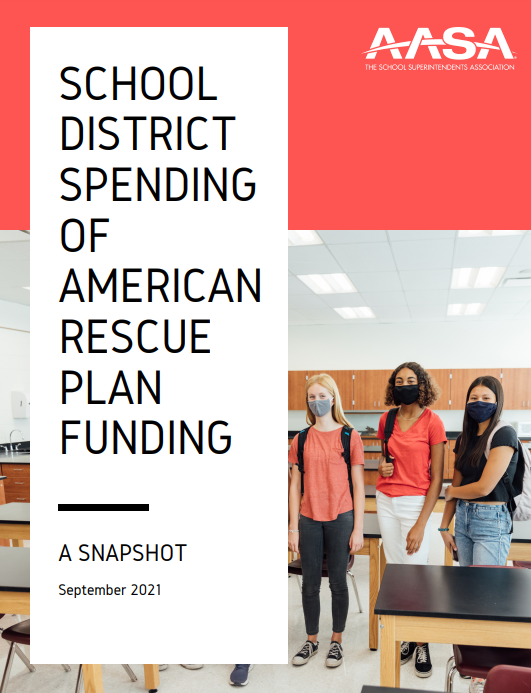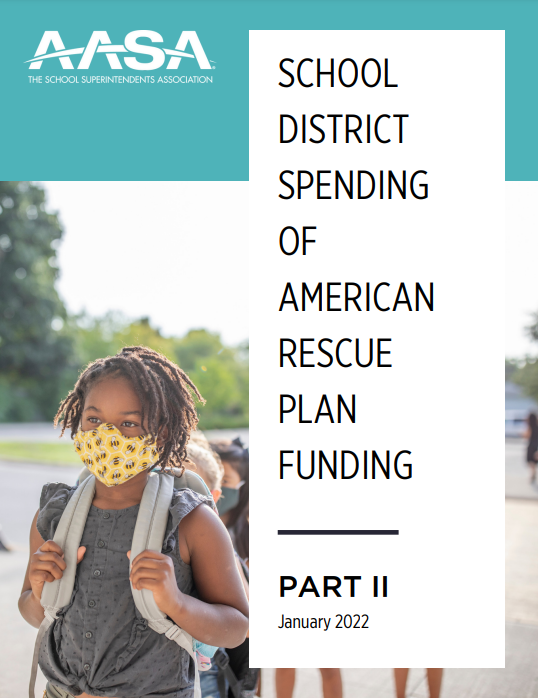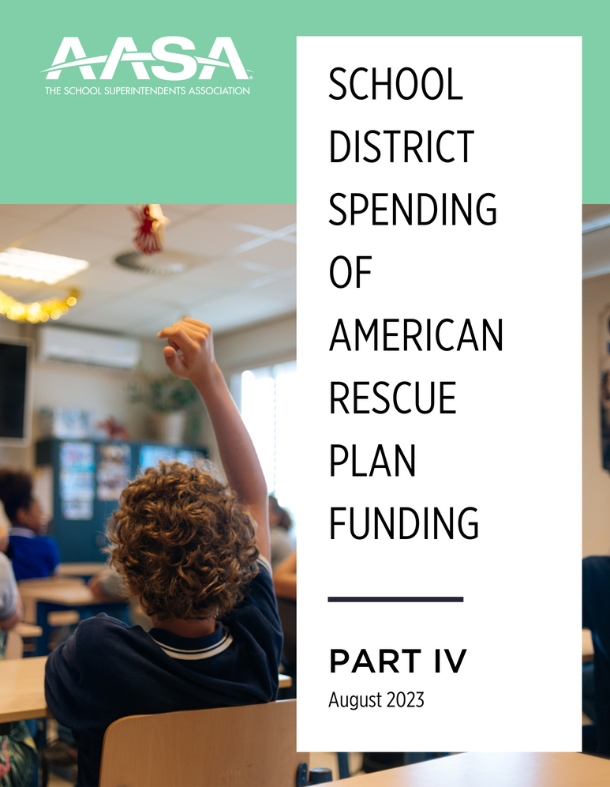School District Spending of American Rescue Plan Funding
September 09, 2024
 In
a multi-series survey, AASA gathered responses from district leaders about how they're using American Rescue Plan (ARP) and other federal COVID-19 relief funding to address pandemic-related student learning recovery, challenges they're facing, and
ongoing needs after funding runs out.
In
a multi-series survey, AASA gathered responses from district leaders about how they're using American Rescue Plan (ARP) and other federal COVID-19 relief funding to address pandemic-related student learning recovery, challenges they're facing, and
ongoing needs after funding runs out.
In 2020 and 2021, Congress directed close to $200 billion to state and local education agencies to help reopen schools and aid school districts in addressing the impact the pandemic had on students through improvements to their academic, social-emotional, and mental and physical health needs.
AASA believes this funding will have a lasting impact in enabling students to not only recover from lost inperson instruction, but in assisting district leaders in thoughtfully investing federal funds in ways that address longstanding disparities in accessing educational opportunities for students that were only exacerbated as a result of the COVID-19 pandemic.
The purpose of these surveys was to ascertain:
- District leaders' priorities in expending ARP funds
- Challenges districts are experiencing in spending ARP funds
- Programmatic areas districts anticipate cutting as ARP funds run out
Advertisement
Advertisement
Advertisement
Advertisement







.png?sfvrsn=2c854cfb_9)